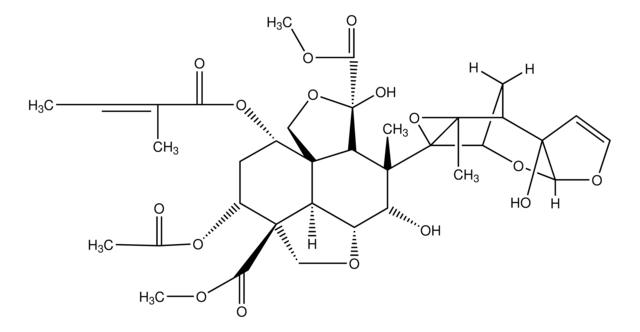49085
Atrazine
analytical standard
Synonym(s):
2-Chloro-4-ethylamino-6-isopropylamino-1,3,5-triazine
About This Item
Recommended Products
grade
analytical standard
Quality Level
CofA
current certificate can be downloaded
packaging
ampule of 100 mg
technique(s)
HPLC: suitable
gas chromatography (GC): suitable
application(s)
agriculture
environmental
format
neat
storage temp.
2-30°C
SMILES string
CCNc1nc(Cl)nc(NC(C)C)n1
InChI
1S/C8H14ClN5/c1-4-10-7-12-6(9)13-8(14-7)11-5(2)3/h5H,4H2,1-3H3,(H2,10,11,12,13,14)
InChI key
MXWJVTOOROXGIU-UHFFFAOYSA-N
Gene Information
mouse ... Esr1(13982)
Looking for similar products? Visit Product Comparison Guide
Related Categories
General description
Application
Signal Word
Warning
Hazard Statements
Precautionary Statements
Hazard Classifications
Aquatic Acute 1 - Aquatic Chronic 1 - Skin Sens. 1 - STOT RE 2
Storage Class Code
11 - Combustible Solids
WGK
WGK 3
Personal Protective Equipment
Choose from one of the most recent versions:
Already Own This Product?
Find documentation for the products that you have recently purchased in the Document Library.
Protocols
Separation of Atrazine-desethyl; Metoxuron; Hexazinone; Simazine; Cyanazine; Methabenzthiazuron; Atrazine; Monolinuron; Diuron; Isoproturon; Metobromuron; Metazachlor; Sebuthylazin; Linuron; Metolachlor
Our team of scientists has experience in all areas of research including Life Science, Material Science, Chemical Synthesis, Chromatography, Analytical and many others.
Contact Technical Service


